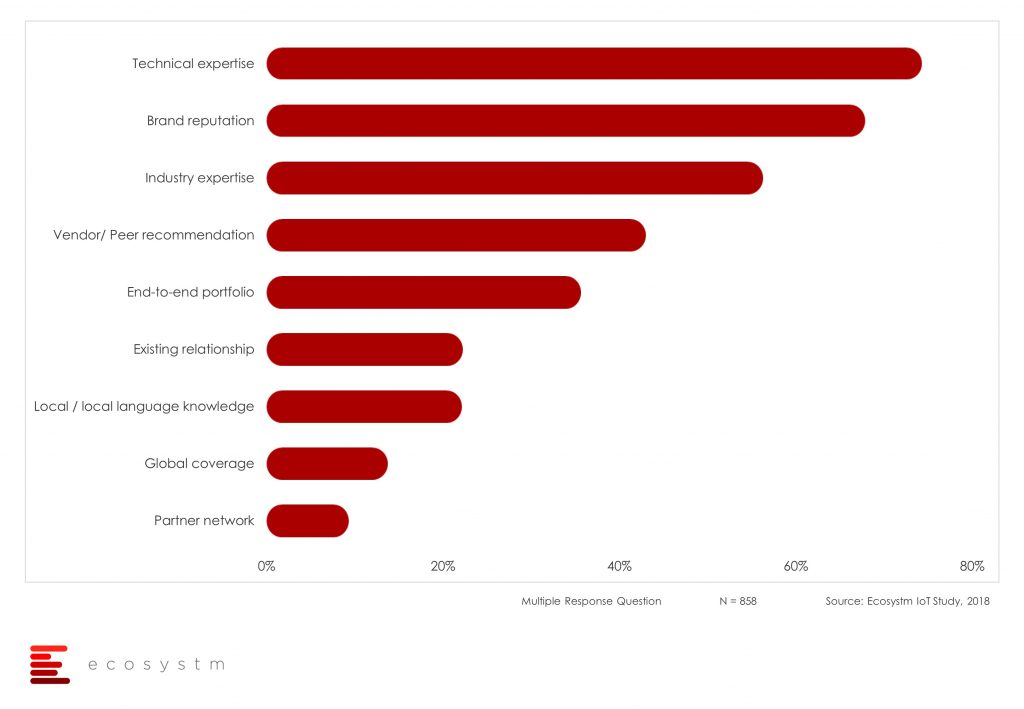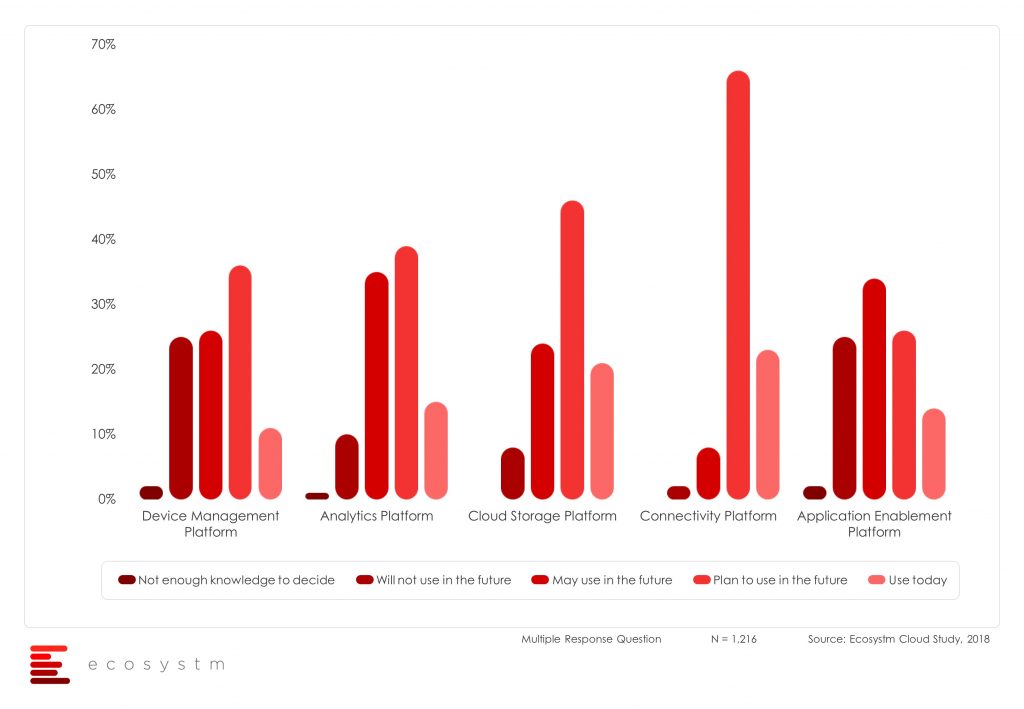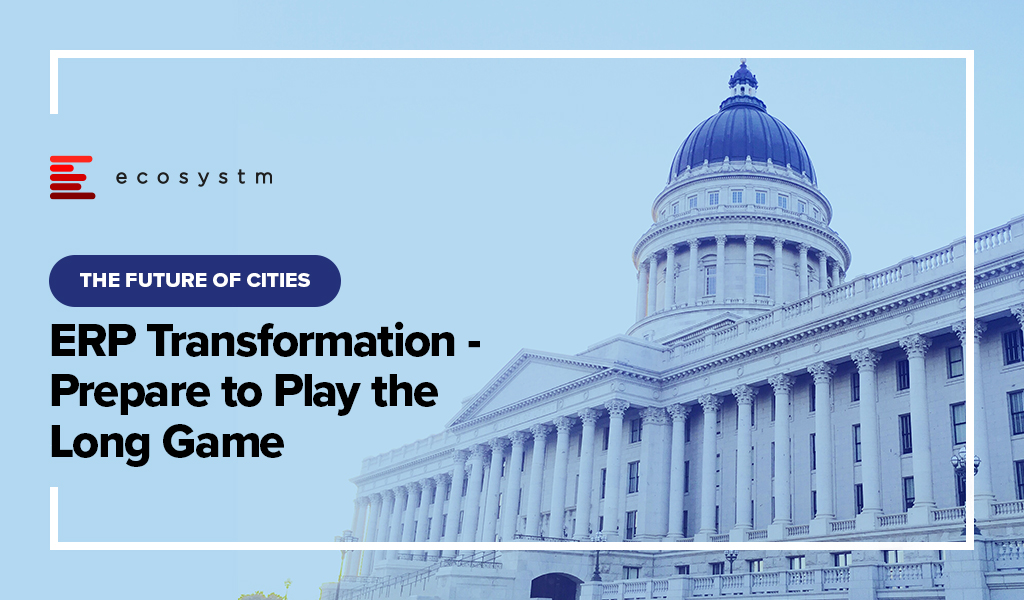It is an incredible time of change for the city and regional governments where every strategic activity – especially in these globally challenging times – presents a significant opportunity for transformation. To continue to meet the changing needs of the communities they serve, every modern city government’s technology story is a work in progress. While this is the mantra for successful continuous improvement it also describes the best strategic approach for how municipalities should manage their corporate application replacement programs.
Unfortunately, significant systems upgrade and replacement programs are regularly approached as complex, multi-tasking activities that have a hard start, a defined program, and a date-stamped end. In taking this traditional project implementation approach, intuitively, many organisations believe that doing as much as possible, in as quick a time as possible, ultimately helps to achieve twice as much within the same time. The result is more likely to be half as much, and at lower levels of quality and enjoyment for all involved. This manifests as project scope creep and budget overruns.
Aside from these big bang approaches, thanks to large implementation costs and stringent regulatory oversight, local governments are also forced to think upfront about the potential future value created by a significant core system technology change. The pressure of moving at high speed, and with a dominant technology focus, can obscure both the true organisational cost and ultimate value of the program. This mentality prevails even when it is acknowledged that activities associated with a transformation program will eventually usher in a period of significant change – that is not limited to the changing core corporate applications environment itself.
The 4-Part ERP Transformation Trap is All Too Common in City Government
An over-reliance on technology to deliver business transformation outcomes. Local governments everywhere continue to pursue strategic plans that are either wholly defined or implicitly reliant on world-class customer experience (CX), employee experience (EX), and digital transformation (DX) capabilities. Despite these being business-oriented strategies, organisations then pursue an over-reliance on technology – usually winner-take-all ERP led procurements – to achieve them.
Choosing an industry solution focused on the wrong business model. The chance of achieving these digital transformation outcomes is further obscured when the customer is not central to the data model. The core corporate application technology underpinning the sector’s leading ERP programs is largely based on a property-centric model – where the customer is a subordinate attribute of a property, and the property asset defines the business process and individual. It is a challenge for any council to deliver contemporary customer-first digital transformation with a property-centric approach. To realise customer and employee-centric outcomes, councils must therefore rethink their project’s business methodology and ask themselves, “what is our primary focus here?”. This is never more important than when replacing legacy systems.
Inability to realise that a winner-take-all ERP solution is not an architectural choice. ERP is important but it is not everything. The traditional council ERP is just one important part of an overall capability that allows authorities to longitudinally manage the impacts and opportunities of change across their organisation, communities, and stakeholder ecosystems. Having chosen a sector specific ERP solution, city governments realise too late that no single technology vendor has a best-of-breed solution to achieve the desired DX outcomes. That requires a more sophisticated architectural approach.
Failure to acknowledge there is no finish line to transformation. Like many worthwhile activities, the prize in DX is in the journey, not in the cup. While there can be an end to “project scope”, there should be no “end point” for an ERP transformation program. Only once these challenges are acknowledged and accepted, can transformation be assimilated into the organisation to ensure the council is technically capable of delivering the implicit outcome for the organisation. This could simply be defined as ‘a contemporary business approach to managing the money, the assets, the community, the customers, and the staff of regional government.’
A Better Way: Re-Architecting for Project Success
Where opportunities to meet increasing CX and EX demands arise, especially through ERP and corporate application renewal programs, successful projects in contemporary councils require a service-oriented architecture not found in contemporary or legacy ERP systems alone.
Beyond the property-centric challenges already outlined, even contemporary systems and suppliers can be among the least flexible to the changing data management requirements of many organisations which call for significantly more robust data, integration and application friendly infrastructure management environments.
Customer centricity, data management, integration and software infrastructure capabilities must take precedent over an aging view of single-vendor dominance in the city government sector, especially in middle- and back-office functions, which are typically void of true differentiation opportunities and prone to confining organisations to technology-led and locked projects.
Rather than tendering for a single software provider or platform, contemporary city governments must ditch the old approach to procuring a winning ERP vendor and take steps to establish the following Big 5 platform capabilities (Figure 1). And then foster the contemporary workforce to support them.

For several decades now many organisations have attempted to short-circuit the city government ERP challenge. Fundamentally, technology transformation is not possible without technology change. A non-negotiable part of that change is a shift away from the psychology of brand-based procurement towards a new architectural approach which, like all businesses, is adaptable to change over a long period of time.

One of the most important industry verticals that the Internet Of Things (IoT) is quickly enabling is buildings. To date most of the analyst coverage has been focused on smart building and building management systems collecting sensor data on lighting, temperature monitoring, and occupancy. While IoT device, connectivity, platform, management and integration vendors have marketed their hardware and software differences, the unsung heroes of ‘Smart Buildings’ should be the Facilities Management (FM) assets that have the most influence in the true IoT ecosystem. FM covers a lot of segments in commercial buildings – retail, restaurants, grocery/supermarkets, spas and gymnasiums, retail healthcare and many more and as such these segments create large quantities of business related data from sensors within them. Today’s FM has successfully moved from simply managing ‘boxes’ to managing smart connected facilities.
This week I attended ServiceChannel’s ServiceX19 customer event in Scottsdale, Arizona where 300 ServiceChannel customers were treated to an update on the current and future state of FM. Annually, ServiceChannel’s customers raise over 100 million work orders, across 330,000 locations, fulfilled by 50,000 contractors in 75 countries. Equally impressive is that these customers are responsible for over $37 Billion spend on keeping building clean, bathrooms working, air conditioners heating and chilling, refrigerators cooling, lights switch on and so on.
Through their Facility Management Platform, which behaves like an online market place for their customers, ServiceChannel is rapidly becoming a valuable analytics and data management software company. Work orders are an incredible source of information for every asset connected into a building that requires any level of service. Just like State Farm Insurance who ‘know a thing or two, because we’ve seen a thing or two’, ServiceChannel have seen ‘a thing or two’ such as work orders to deal with alligators and of course cars crashed into shop fronts! However, some examples of more traditional analytics use cases include the following:
- Predictive repairs on capital intensive equipment is being decided by the facilities manager before the original equipment manufacturer.
- By using ServiceChannel’s comprehensive data visualisation capability, facilities managers have the ability to identify measure the difference between spending on preventative maintenance versus post failure repair.
- Individual service fulfillment analysis can often show that engaging with the least expensive hourly rated contractor may not always provide the best outcomes.
Over time ServiceChannel’s data collection and analytics is enabling their customers to have visibility into their businesses that go beyond FM. ServiceChannel is enabling their customers to become more digital and creating higher value business outcomes. While IT and equipment manufacturers have tried to create digital ecosystems and attract participants into their network, they are still one step removed from the customer. This gap means that they are not truly able to help manage the customer experience within smart buildings. Rather, companies like Service Channel have access to the heterogeneous asset environments by working directly with facility managers. During the conference, I saw service records comparing the major HVAC vendors within a large retailer and immediately thought that individual HVAC vendors would be very interested to see how they stacked up against each other. The ServiceChannel connected asset analysis gives their customers the information that enables discussions based on transparency, trust and truth – which is a powerful negotiating tool.
Conclusion
The event showed a reality state of the IoT associated with analytics in an industry that is reinventing itself through enabled assets connected to their work flow systems. It clearly showed that the Smart Buildings industry is probably about 2 years behind the roadmap set out by the major IT research firms. Businesses are now beginning to understand what IoT is even if they do not call it by that name. Connected assets are becoming more familiar and the value from analytics is being realised to run businesses. Customer experience is now a tangible metric!
Separately, as ServiceChannel’s analytics engine matures and external data sources such a weather and environmental conditions are curated with asset management, then facility managers become more valuable to the CFO, the CIO and the customers they serve. To date equipment vendors’ attempts to build ecosystems of IoT-based partners has been met with limited success because they are still not close enough to the end customer. Original equipment vendors should make their products connected to an IoT infrastructure network as easily and as quickly as possible and then partner with companies like ServiceChannel who can curate and promote their asset data.
A major consideration that I left for the end is whether to select an open source or a proprietary IoT Platform. The heart often wants open source, while the head chooses proprietary. It is near impossible to find someone who will deny that IoT Platforms are hot. It is not surprising that there are dozens of companies developing or updating their proprietary IoT platforms, with many of them using open source code in their products. I mention this to make it clear that probably most IoT platform vendors leverage some open source code.
Open Source IoT Platform
There are many people who believe that IoT needs open source to be successful. Everyone loves the promise of open source IoT platforms – It is free (or almost free); it is built by passionate communities of developers; and there is no vendor lock-in. Add to that, the rate of innovation, which is supposedly faster with open source IoT platforms. Why would anyone choose to work with anything else?
A while back the IoT Data Management (IoTDM) project showcased how a robust middleware platform can unlock innovation and fulfill the promise of IoT. I have been following up to 30 open source IoT platforms, starting with Eclipse Open Source IoT platforms project. Recently I have had conversations with members of a few of them such as Kaa and SiteWhere; but like I said there are many other enthusiastic IoT platform developers in the world, some closer than you think.
The advantages and disadvantages of open source have been repeated for years. On the advantages side we have:
- Cost
- Flexibility
- Avoiding cumbersome licensing requirements or activation headaches
- Freedom
However, it is not all roses in the realm of open source. As the saying goes, nothing is ever truly free. The disadvantages of open source include:
- Support
- Documentation
- Complexity
- Advertising
- Easily detectable vulnerabilities
I want to emphasize that sometimes, one of the advantages of open source – transparent, customizable code which is accessible by anyone – can be turned into a disadvantage. Without a proprietary vendor on the hook for releasing updates, fixes may be slower to arrive (though to be fair a strong developer community can develop solutions more readily as well).
Proprietary IoT Platform
If the decision to use and customize an open source IoT platform is complex, the decision to select a proprietary IoT platform is a nightmare. There are so many vendors out there that customers are expecting a market consolidation or running pilots before they can take a final purchase decision to invest in a proprietary IoT platform.
With companies like GE Digital failing with its Predix platform, the fear that any other big companies like Microsoft, AWS, Google, IBM or PTC can also fail is understandable.
And if this fear exists, you can imagine how customers feel when they need to decide among hundreds of proprietary IoT platforms guessing if they will survive or at least be acquired. You need to be careful of the Walking Dead of IoT
I have addressed the challenges and benefits of proprietary platforms in a previous blog: About IoT Platforms, Super Powers Methodology, Superheroes and Supervillains
Key Takeaway
I have repeated many times that the IoT is going to transform the way we live, work, and interact with each other. It’s more than a trend; it’s a revolution that will fundamentally transform the way the global economy functions, and IoT Platforms will play a key role.
Even after reading through this series it is possible that I may not have completely solved your doubts about what should be your decision regarding the most suitable IoT platform for your business. I hope at least you are not more confused! We should trust the market will consolidate very fast either by M&As or unfortunately by death of start-ups, so we will find a much clearer picture in a couple of years.
Nevertheless, should this fragmented market affect your decision to initiate or advance your IoT strategy? Clearly not. Your business cannot wait 2 or 3 years without IoT. Make sure that the IoT impacts you in your business – the IoT platform you choose will be key.
Thanks in advance for your Likes and Shares
Thoughts? Comments?
Industry knowledge is a key area of expertise that many organizations look for in their IoT platform vendor. The global Ecosystm IoT Study determined the key IoT partner selection criteria for planned deployments of IoT. While technical expertise emerges as the key criterion (and bodes well for horizontal platform vendors), industry expertise comes in at number 3.

Some industries such as the Retail, Distribution & Consumer Packaged Goods, Health & Life Sciences, and Transportation assign a higher significance to industry experience.
Vertical vs. Horizontal IoT Platforms
It is not my intention to write in detail about building a vertical or horizontal IoT platform. Though I promise to address this in a detailed post later. Nevertheless, I give you two very useful links that are relevant even today. They provide different and interesting point of views.
A good example of where a horizontal platform would be beneficial is when an organization wants to leverage the portfolio of a particular vendor – let’s say connectivity to Google Cloud Platform, giving customers the benefits of using BigQuery, Google’s analytical service, using data collected from connected devices. On the other hand, a good example of a vertical platform use would be from Healthcare where the organisation chooses an integrated cloud-based, analytics-driven solution designed to deliver real-time, actionable insights on patient care across the entire patient experience.
There are always some special industry cases, as well, such as the companies that want to participate in the home automation market. In Who Will Build The ‘God Platform’ For The Internet Of Things? the author suggests that these companies will need to create products that work compellingly in isolation and alongside competitors’ products — and somewhere in all of this, the ‘God Platform’ might emerge.
The Singular Case of Smart City Platforms
Smart Cities need Intelligent Platforms to thrive. IoT will be central to this shift from a vertical to horizontal approach, based around a new generation of powerful, unified Smart City Platforms, capable of managing different technologies and devices and supporting a wide range of applications and services. A Smart City Platform is defined as a framework for sensing, communications, integration and intelligent decision-making, delivering the minutest information and services that citizens need.
Some Other Considerations
Platforms Vs. Products
We hear IoT vendors saying that the IoT is at an inflection point. In “The Internet Of Things Race – Platforms Vs. Products”, Adrian Bridgwater raises an interesting discussion. What matters most, the platforms or the products?
“What does matter is the degree to which we recognize just how much the Internet of Things (IoT) platform-level technologies matter. We need analytics tools capable of dealing with large quantities of fast-moving data, we need cloud Platform-as-a-Service functionality that is capable of handling the immense flow of data and provide anytime access for decision and we need security systems capable of helping organizations protect IoT data as rigorously as they do their own confidential financial, IP and strategy information”.
For Adrian, today, it’s the Internet of Things (IoT) but tomorrow it will be the Internet of Analytics-Enabled Secure Automated Wearable Things (IoA-EASWT).
Platforms Vs. Frameworks
Lots of IoT frameworks and/or platforms with different enterprise offerings and alliances have come up recently to increase the connectivity of devices into private and/or public networks/cloud. Key to a successful IoT implementation is the interoperability among various devices, robust IoT frameworks and platforms that enable the same with powerful analytics that enable applications to be built on top of it.
In this instalment we explore how commercially available platforms, including M2M platforms, might be an option for you.
Once Upon a Time – A Small Group of M2M Platforms
M2M Service Providers have been using the term M2M Platform for years with their enterprise customers. The main functionality of these carrier-grade platforms was to manage connectivity through a secure, fast and reliable private network via dedicated hubs directly into each of the major network partners. They allowed control of multiple network SIM estates, management of SIMs and devices and finally management of their billing administration in line with their own systems and procedures.
Most M2M Service Providers developed in-house M2M platforms but also in parallel they acquired M2M platforms from vendors such as Cisco Jasper Control Center, Ericsson Device Connection Paltform (DCP) , Cumulocity, and Telenor Connexion , among others.
With the hype around IoT, M2M Service Providers become more interested in offering their enterprise customers an IoT application development environment that can reduce time, cost, and complexity of deployment of solutions, that can optimize their business processes and help them deliver better and faster services. An early example was Etisalat leveraging ThingWorx IoT Development Platform, announced in 2015.
Which brings me to a mobile network operator (MNOs) – Can they avoid the temptation to develop their own IoT management and application platforms? The complexity of IoT value-added service (VAS) development and deployment demands a continuing operational and commercial effort.
My recommendation: MNOs should instead consider partnering with well-established technology vendors in order to accelerate time to market and create customer value through innovation.
Buy or Build an IoT Platform – Making the Right Decision
Technology companies have spent years adapting their sales pitch to convince their customers or potential customers of the advantages of buying commercial products or ultimately IaaS, PaaS or SaaS platforms. On the other hand, many companies across industries see a risk that their business will depend on suppliers and fear being captives of these technology providers. Their management team and tech leaders have found enough arguments to develop their solutions from scratch.
The eternal dilemma, whether to build from scratch or buy a commercially available off-the-shelf (COTS) IoT Platform to support the needs of the enterprise will continue for a while. Here’s what you need to know about both approaches before making this critical project decision.
- Step 1: Validate the need for an IoT platform. Focus on validating that a business need exists prior to deciding and estimate the return on investment (ROI) or added value.
- Step 2: Identify core business requirements – Involve the right business people. This will determine the success of the process.
- Step 3: Identify architectural requirements – It is extremely important to identify any architectural requirements and follow the status of the confusing IoT standards world, before determining if a COTS or custom solution is the best choice.
- Step 4: Examine existing IoT Platforms – At this point, a business need has been pinpointed, ROI has been estimated, and both core business and architectural restrictions have been identified. Now, you should take a good look at existing IoT vendors (a short list of IoT platforms, to be more concrete).
- Step 5: Evaluate your in-house skills to support a custom IoT platform – It takes many skills to design and deploy a successful IoT platform that is both scalable and extensible.
- Step 6: Explore if a COTS IoT platform fits your need – If your organization does not include a development group comprising personnel experienced in designing IoT solutions to support your enterprise-wide business solutions, a COTS IoT platform will probably provide the best long-term ROI.
More considerations for choosing an IoT platform coming up in the next
When I published “It’s an IoT Platform, stupid!” in 2015 , I did not think that it would be one of my most visited and shared articles. I am proud that just in LinkedIn, this article has received more than 8,000 visits. That´s why I have chosen an update of that article to initiate my collaboration with Ecosystm.
When in late 2013, I decided to relaunch my company OIES Consulting with a focus this time on Advisory services for Internet of Things (IoT), I thought the selection of IoT platforms would be one of the most useful services that we would offer and certainly one that would bring more benefits to the clients wishing to accelerate the adoption of IoT.
At that time, I had identified about 60 IoT platform vendors and despite guidance from research firms, the confusion was brutal. Today it is worse – there are more than 600 platform vendors and the expected market consolidation still has not arrive. Like other analysts and bloggers, I tried to maintain, classify and publish a list of IoT platform vendors but it looks like an impossible task. However, it is a matter of 2-3 more years.
You must agree with me that the IoT platform market needs a quick and urgent consolidation. Hopefully, in the magical year of 2022, we will be talking about no more than 50 vendors at the most.
The Confusing Market of IoT Platforms
But first things first. How to define an IoT platform? How to differentiate between a Connected Device Platform (CDP) and an Application Enablement Platform (AEP) and an IoT Middleware and a Service Enablement Services (SES) platforms?
“Not All IoT Platforms are Created Equal”, it has been said before, and we must understand that the current generation of IoT platforms probably represent the first iteration in this space. But there are marked differences between the different types of platforms. As an organization looking to embrace an IoT platform, this initial diversity can result very confusing. Sean Lorenz from Xively rightly said that the “IoT Platform” is such an overloaded term that its meaning has been lost. Chipset manufacturers, sensor manufacturers, software vendors, consortia and system integrators all have their own definitions.
We find out there with a large number of companies that offer us IoT platforms in the cloud or on premises; for horizontal or vertical implementations; for embedded software development or industrial applications development; with data capture and real-time analytics capabilities; with devices and protocols management capabilities; with connectivity to any network; for developing applications for smart homes, for smart cities, for connected vehicles, for wearables….. the list continues! Tech buyers are understandably confused in their choice of IoT platform. The global Ecosystm IoT Study reveals this confusion.

In such circumstances it is preferable to avoid arguments about which is an IoT platform and how we categorize them. My recommendation here is to ask for help from specialized IoT consultants. They will be able to give you specific guidance based on present and future business needs and can help in the IoT platform selection.
Over my next few blogs I will attempt to guide you through the significance of the different kinds of platforms. It will surely help you in your IoT platform choice, keeping the needs and capabilities of your business in mind.
Stay tuned!







